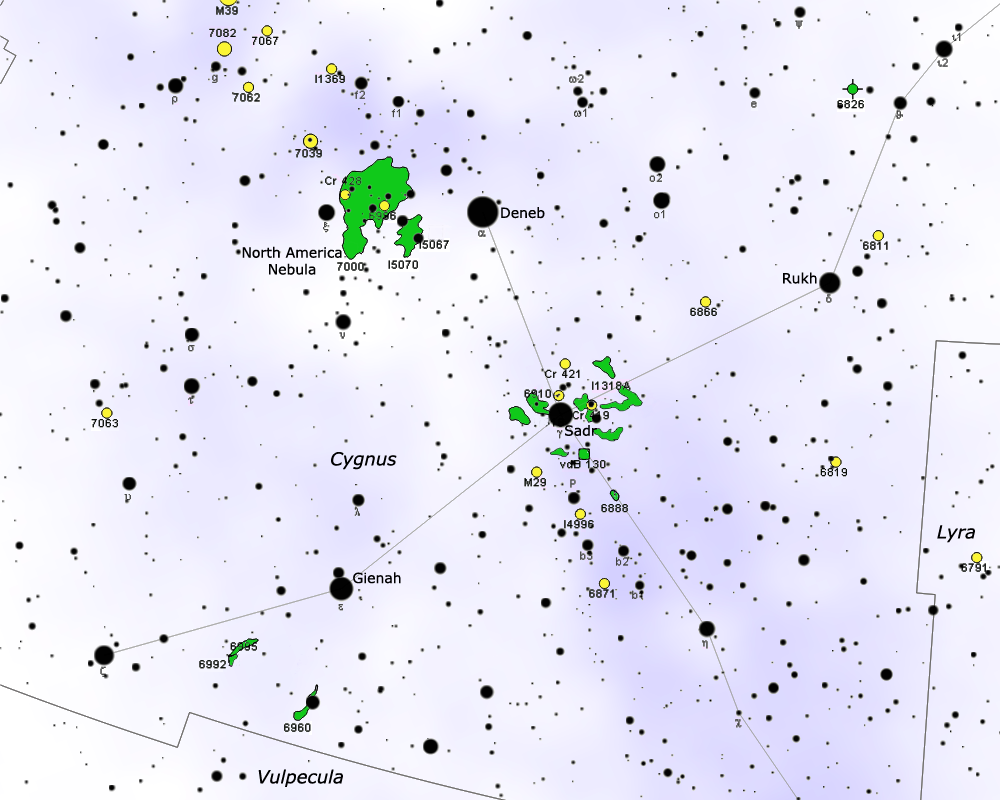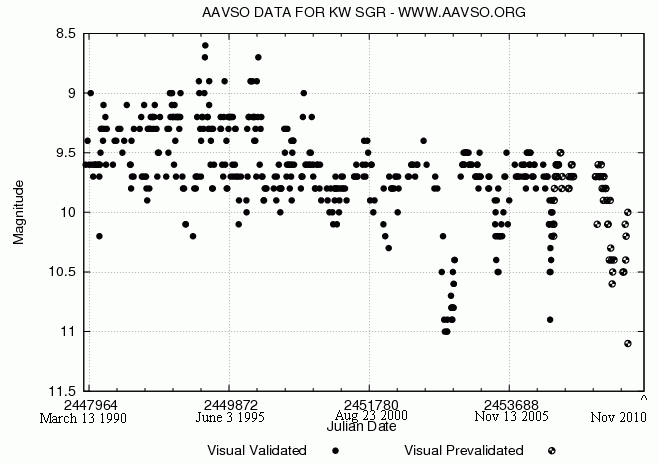|
Photographic Magnitude
Photographic magnitude ( or ) is a measure of the relative brightness of a star or other astronomical object as imaged on a photographic film emulsion with a camera attached to a telescope. An object's apparent photographic magnitude depends on its intrinsic luminosity, its distance and any extinction of light by interstellar matter existing along the line of sight to the observer. Photographic observations have now been superseded by electronic photometry such as CCD charge-coupled device cameras that convert the incoming light into an electric current by the photoelectric effect. Determination of magnitude is made using a photometer. Method Prior to photographic methods to determine magnitude, the brightness of celestial objects was determined by visual photometric methods. This was simply achieved with the human eye by compared the brightness of an astronomical object with other nearby objects of known or fixed magnitude: especially regarding stars, planets and other ... [...More Info...] [...Related Items...] OR: [Wikipedia] [Google] [Baidu] |
Brightness
Brightness is an attribute of visual perception in which a source appears to be radiating/reflecting light. In other words, brightness is the perception dictated by the luminance of a visual target. The perception is not linear to luminance, and relies on the context of the viewing environment (for example, see White's illusion). Brightness is a subjective sensation of an object being observed and one of the color appearance parameters of many color appearance models, typically denoted as Q. Brightness refers to how much light ''appears to shine'' from something. This is a different perception than lightness, which is how light something appears ''compared to'' a similarly lit white object. The adjective '' bright'' derives from an Old English '' beorht'' with the same meaning via metathesis giving Middle English ''briht''. The word is from a Proto-Germanic ', ultimately from a PIE root with a closely related meaning, *' "white, bright". "Brightness" was formerly used as a ... [...More Info...] [...Related Items...] OR: [Wikipedia] [Google] [Baidu] |
Deep-sky Object
A deep-sky object (DSO) is any astronomical object that is not an individual star or Solar System object (such as Sun, Moon, planet, comet, etc.). The classification is used for the most part by amateur astronomers to denote visually observed faint naked eye and Optical telescope, telescopic objects such as star clusters, nebulae and galaxy, galaxies. This distinction is practical and technical, implying a variety of instruments and techniques appropriate to observation, and does not distinguish the nature of the object itself. Origins and classification Classifying non-stellar astronomical objects began soon after the invention of the telescope. One of the earliest comprehensive lists was Charles Messier's 1774 Messier catalog, which included 103 "nebulae" and other faint fuzzy objects he considered a nuisance since they could be mistaken for comets, the objects he was actually searching for. As telescopes improved these faint nebulae would be broken into more descriptive scien ... [...More Info...] [...Related Items...] OR: [Wikipedia] [Google] [Baidu] |
WZ Sagittae
WZ Sagittae (''WZ Sge'') is a dwarf nova cataclysmic star system in the constellation Sagitta. It consists of a white dwarf primary being orbited by a low mass companion. The white dwarf is about 0.85 solar masses while the companion is only 0.08 solar masses. This implies that the companion is a spectral class L2 star, although this has yet to be confirmed. The distance to this system has been determined by parallax, yielding a distance of 45.2 parsecs. WZ Sagittae is an ultrashort period cataclysmic nova, with outbursts observed in 1913, 1946, 1978 and 2001. During the well-observed 2001 outburst, the nova reached a peak visual magnitude of 8.21. The 1913 event was the brightest of the observed outbursts, reaching a photographic magnitude of 7.0. This nova is classified as a SU Ursae Majoris class star, which is a subclass of dwarf nova that produces what are termed superoutbursts spaced several months apart, interspaced with normal outbursts every few weeks. The no ... [...More Info...] [...Related Items...] OR: [Wikipedia] [Google] [Baidu] |
S Doradus
S Doradus (also known as S Dor) is one of the brightest stars in the Large Magellanic Cloud (LMC), a satellite galaxy of the Milky Way, located roughly 160,000 light-years away. The star is a luminous blue variable, and one of the List of most luminous stars, most luminous stars known, having a luminosity varying widely above and below 1,000,000 times the luminosity of the Sun, although it is too far away to be seen with the naked eye. History S Doradus was noted in 1897 as an unusual and variable star, of Secchi type I with bright lines of Hα, Hβ, and Hγ. The formal recognition as a variable star came the assignment of the name S Doradus in 1904 in the second supplement to Catalogue of Variable Stars. S Dor was observed many times over the following decades. In 1924, it was described as "P Cygni class" and recorded at photographic magnitude 9.5 In 1925, its absolute magnitude was estimated at −8.9. In 1933 it was listed as a 9th-magnitude Beq star with bright hydr ... [...More Info...] [...Related Items...] OR: [Wikipedia] [Google] [Baidu] |
KW Sagittarii
KW Sagittarii is a red supergiant star, located approximately away from the Sun in the direction of the constellation Sagittarius. It is one of the largest known stars, with a diameter about 1,000 times larger than the Sun. If placed at the center of the Solar System, the star's surface would engulf Mars, coming close to Jupiter's orbit. Variability In 1942, Henrietta Hill Swope listed KW Sagittarii as a variable star. It varies erratically in brightness over a range of about two magnitudes. It is classified as a semiregular variable, although the listed period of 670 days is poorly defined. The peculiar cool spectrum has led to comparisons with symbiotic variables, but it is no longer considered to be a cataclysmic binary. Distance A distance of 2,420 parsecs is based on the assumption of membership on the Sagittarius OB5 association. The parallax derived from the Hipparcos mission is negative so doesn't give much information about the distance except that it is lik ... [...More Info...] [...Related Items...] OR: [Wikipedia] [Google] [Baidu] |
Supergiant
Supergiants are among the most massive and most luminous stars. Supergiant stars occupy the top region of the Hertzsprung–Russell diagram, with absolute visual magnitudes between about −3 and −8. The temperatures of supergiant stars range from about 3,400 K to over 20,000 K. Definition The title ''supergiant'', as applied to a star, does not have a single concrete definition. The term ''giant star'' was first coined by Hertzsprung when it became apparent that the majority of stars fell into two distinct regions of the Hertzsprung–Russell diagram. One region contained larger and more luminous stars of spectral types A to M, which received the name ''giant''. Subsequently, as they lacked any measurable parallax, it became apparent that some of these stars were significantly larger and more luminous than the bulk, and the term ''super-giant'' arose, quickly adopted as ''supergiant''. Supergiants with spectral classes of O to A are typically referred to as ... [...More Info...] [...Related Items...] OR: [Wikipedia] [Google] [Baidu] |
Visual Magnitude
Apparent magnitude () is a measure of the brightness of a star, astronomical object or other celestial objects like artificial satellites. Its value depends on its intrinsic luminosity, its distance, and any extinction of the object's light caused by interstellar dust along the line of sight to the observer. Unless stated otherwise, the word ''magnitude'' in astronomy usually refers to a celestial object's apparent magnitude. The magnitude scale likely dates to before the ancient Roman astronomer Claudius Ptolemy, whose star catalog popularized the system by listing stars from 1st magnitude (brightest) to 6th magnitude (dimmest). The modern scale was mathematically defined to closely match this historical system by Norman Pogson in 1856. The scale is reverse logarithmic: the brighter an object is, the lower its magnitude number. A difference of 1.0 in magnitude corresponds to the brightness ratio of \sqrt /math>, or about 2.512. For example, a magnitude 2.0 star is 2. ... [...More Info...] [...Related Items...] OR: [Wikipedia] [Google] [Baidu] |
Electromagnetic Spectrum
The electromagnetic spectrum is the full range of electromagnetic radiation, organized by frequency or wavelength. The spectrum is divided into separate bands, with different names for the electromagnetic waves within each band. From low to high frequency these are: radio waves, microwaves, infrared, visible light, ultraviolet, X-rays, and gamma rays. The electromagnetic waves in each of these bands have different characteristics, such as how they are produced, how they interact with matter, and their practical applications. Radio waves, at the low-frequency end of the spectrum, have the lowest photon energy and the longest wavelengths—thousands of kilometers, or more. They can be emitted and received by antenna (radio), antennas, and pass through the atmosphere, foliage, and most building materials. Gamma rays, at the high-frequency end of the spectrum, have the highest photon energies and the shortest wavelengths—much smaller than an atomic nucleus. Gamma rays, X-rays, and ... [...More Info...] [...Related Items...] OR: [Wikipedia] [Google] [Baidu] |
Microdensitometer
A microdensitometer is an optical instrument used to measure optical density, optical densities in the microscopic domain.Christopher Dainty, J. C. Dainty and R. Shaw, ''Image Science'' (Academic, New york, 1974).T. H. James, ''The Theory of the Photographic Process'' (Eastman Kodak, Rochester, 1977).F. J. Duarte, ''Tunable Laser Optics'' (Elsevier Academic, New York, 2003) Chapter 10. A well-known microdensitometer, used in the photographic industry, is a granularity instrument or granularity machine. The granularity measurement involves the use of an optical aperture, 10-50 micrometers in diameter, and in the recording of thousands of optical density readings. The standard deviation of this series of measurements is known as the ''granularity'' of the measured transmission surface, optical film, or photographic film, in particular . An alternative version to the traditional point-by-point microdensitometer is the beam expander, beam expanded N-slit interferometer, laser microd ... [...More Info...] [...Related Items...] OR: [Wikipedia] [Google] [Baidu] |
Microscope
A microscope () is a laboratory equipment, laboratory instrument used to examine objects that are too small to be seen by the naked eye. Microscopy is the science of investigating small objects and structures using a microscope. Microscopic means being invisible to the eye unless aided by a microscope. There are many types of microscopes, and they may be grouped in different ways. One way is to describe the method an instrument uses to interact with a sample and produce images, either by sending a beam of light or electrons through a sample in its optical path, by detecting fluorescence, photon emissions from a sample, or by scanning across and a short distance from the surface of a sample using a probe. The most common microscope (and the first to be invented) is the optical microscope, which uses lenses to refract visible light that passed through a microtome, thinly sectioned sample to produce an observable image. Other major types of microscopes are the fluorescence micro ... [...More Info...] [...Related Items...] OR: [Wikipedia] [Google] [Baidu] |
Human Eye
The human eye is a sensory organ in the visual system that reacts to light, visible light allowing eyesight. Other functions include maintaining the circadian rhythm, and Balance (ability), keeping balance. The eye can be considered as a living optics, optical device. It is approximately spherical in shape, with its outer layers, such as the outermost, white part of the eye (the sclera) and one of its inner layers (the pigmented choroid) keeping the eye essentially stray light, light tight except on the eye's optic axis. In order, along the optic axis, the optical components consist of a first lens (the cornea, cornea—the clear part of the eye) that accounts for most of the optical power of the eye and accomplishes most of the Focus (optics), focusing of light from the outside world; then an aperture (the pupil) in a Diaphragm (optics), diaphragm (the Iris (anatomy), iris—the coloured part of the eye) that controls the amount of light entering the interior of the eye; then an ... [...More Info...] [...Related Items...] OR: [Wikipedia] [Google] [Baidu] |
Photons
A photon () is an elementary particle that is a quantum of the electromagnetic field, including electromagnetic radiation such as light and radio waves, and the force carrier for the electromagnetic force. Photons are massless particles that can move no faster than the speed of light measured in vacuum. The photon belongs to the class of boson particles. As with other elementary particles, photons are best explained by quantum mechanics and exhibit wave–particle duality, their behavior featuring properties of both waves and particles. The modern photon concept originated during the first two decades of the 20th century with the work of Albert Einstein, who built upon the research of Max Planck. While Planck was trying to explain how matter and electromagnetic radiation could be in thermal equilibrium with one another, he proposed that the energy stored within a material object should be regarded as composed of an integer number of discrete, equal-sized parts. To explain the ... [...More Info...] [...Related Items...] OR: [Wikipedia] [Google] [Baidu] |








